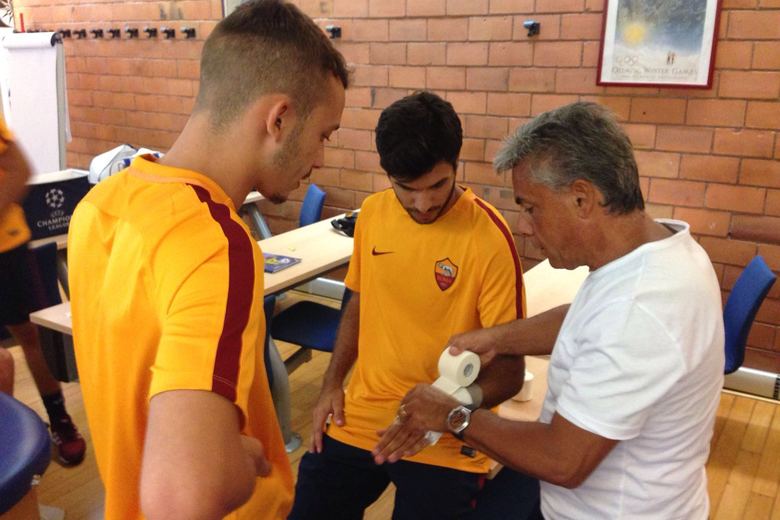Today, kinesiology tape plays an increasingly important role in the treatment of athletes.
The kinesio tape helps a lot both during the recovery and rehabilitation phase and when it comes to managing pain.
Dream K is a special type of tape which, due to its composition, the method of production and its properties, makes it an exclusive product of its kind.

Dream K, the innovative Sixtus tape, became well known after Euro 2012 when the blue stripes appeared on Mario Balotelli's back.
What is kinesiology tape used for?
- Treatment of injuries
- Relieve pain and swelling
- Support weak zones
- Kinesiology tape is also used to provide extra support to muscles or joints that need it. If you have patellofemoral stress syndrome, IT band friction syndrome, or Achilles tendinitis, kinesiology taping can help.
- Retrain muscles
- Kinesiology tape can help retrain muscles that have lost function or that have become accustomed to an unhealthy way of working.
- Improve performance
Some athletes use kinesiology taping to help them achieve peak performance and protect against injury when competing in special events. Unlike white medical or athletic tape, kinesiology tape allows you to move normally. In fact, some studies show it can improve movement and endurance. Studies on athletes have shown that when kinesiology tape is used on tired muscles, performance improves.
- Manage scars
Although you should never use kinesiology tape on an open wound, there is some scientific evidence to suggest that kinesiology tape can improve the long-term appearance of scars after surgery or injury.
How to apply kinesiology tape
You should always consult with a physical therapist trained in the proper application of kinesiology tape before attempting to apply it yourself.
- Clean and dry the area first.
Lotions and oils can prevent the tape from sticking. - Cut the desired tape size
- Cut off rounded corners at the ends of each strip if they don't already have them. The rounded corners are less likely to catch on clothes; and helps keep the tape on longer.
- When applying the first tab to anchor the strip, allow the end to roll back slightly after removing the backing paper. You don't want any stretch in the last 3cm on either end, as these tabs are just to hold the tape in place. Stretching the ends will cause the tape to pull on the skin, which may cause irritation or cause the tape to come off faster.
- Keep your fingers on the wrapping paper to hold the tape. If you touch the adhesive part, it will become less sticky.
Your therapist can let you know how much stretch to use in the treatment area.
To get 75 percent stretch, stretch the tape as far as it will go, then release it about a quarter of its length. - When stretching the tape, use your whole thumb over the tape to get an even stretch.
- After applying the tape, rub the strip vigorously for several seconds. Heat activates the glue. Full adhesion usually takes about 20 minutes. The tape can stay on for 3-5 days.
History
The first kinesio tape was developed in the late 1970s by Dr. Kenzo Kase, a Japanese chiropractor who wanted a tape that provided support but did not restrict movement the way traditional athlete tapes do.
Kinesiology tape is a therapeutic tape that is strategically applied to the body to provide support, reduce pain, reduce swelling and improve performance.
How does kinesiology tape work?
Kinesiology tape is really stretchy as it is developed with a mixture of cotton and nylon. It is designed to mimic the elasticity of the skin so you can use your full range of motion. The tape's medical-grade adhesive is also water-resistant and strong enough to stay on for three to five days, even when exercising or showering.
- When the tape is applied to your body, it gently lifts the skin. It is believed that this helps create a microscopic space between your skin and the tissues beneath it.
- Small studies have shown that when kinesiology tape is applied over the knee, it increases the space in the knee joint. Another study found that kinesiology tape also increased shoulder joint space. Although the increase in space is small, it helps reduce the risk of joint irritation.
- Improve the circulation of blood and fluids.
If you have been injured, kinesiology tape can help improve circulation and reduce swelling in the area where you are injured.
- Improve the circulation of lymphatic fluids. Lymph fluid is mostly water, but it also contains proteins, bacteria and other chemicals. The lymphatic system is how your body regulates swelling and fluid retention.

